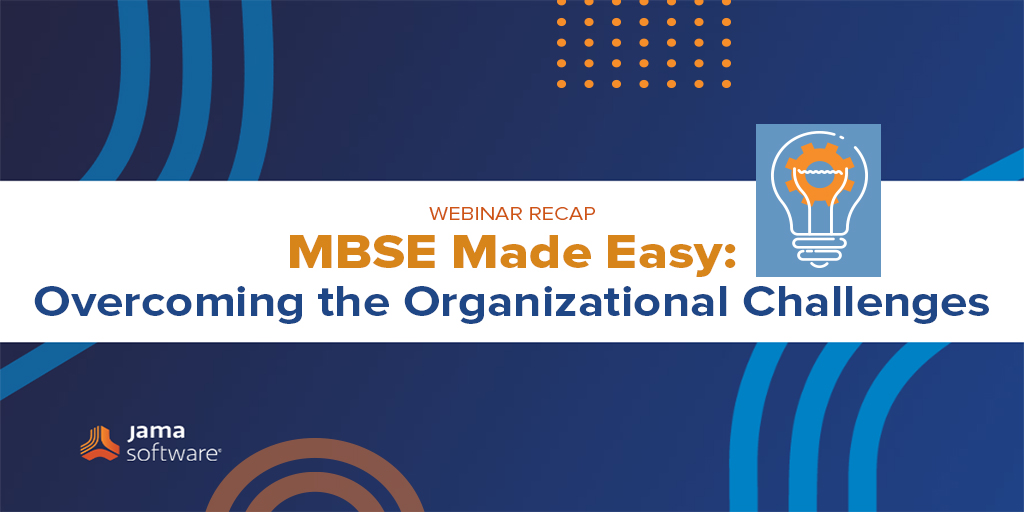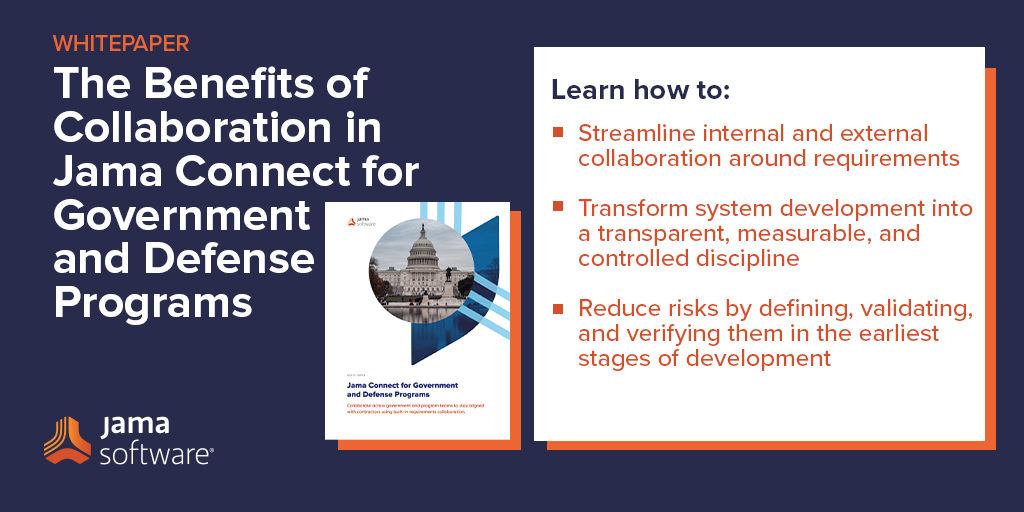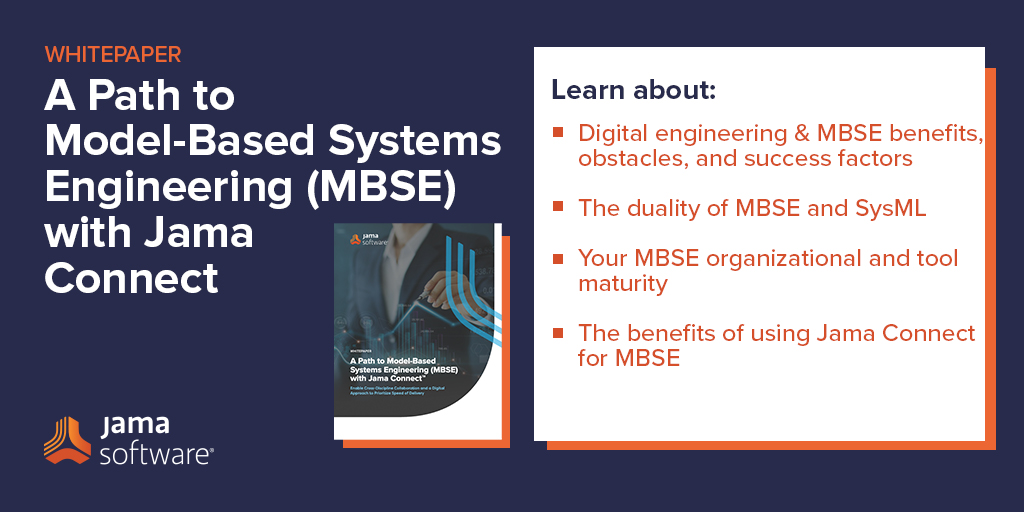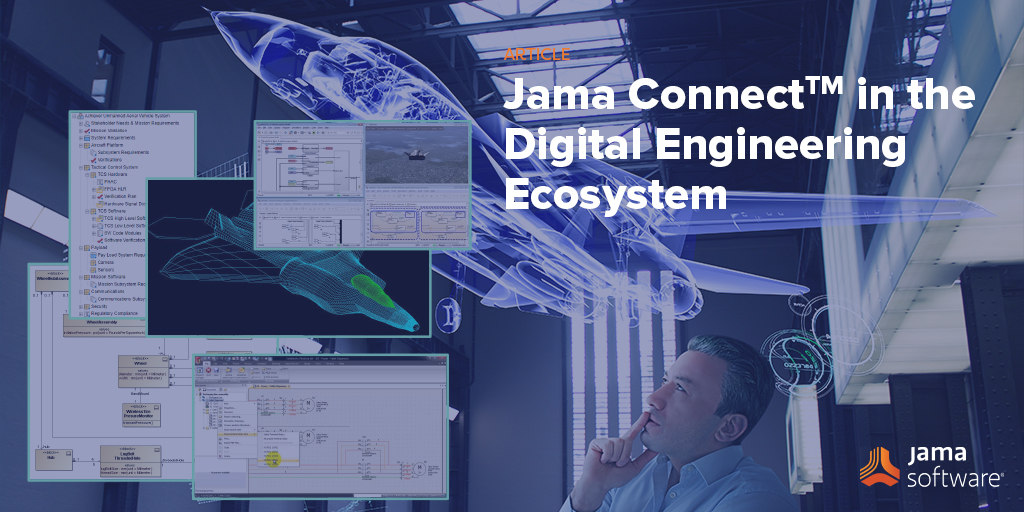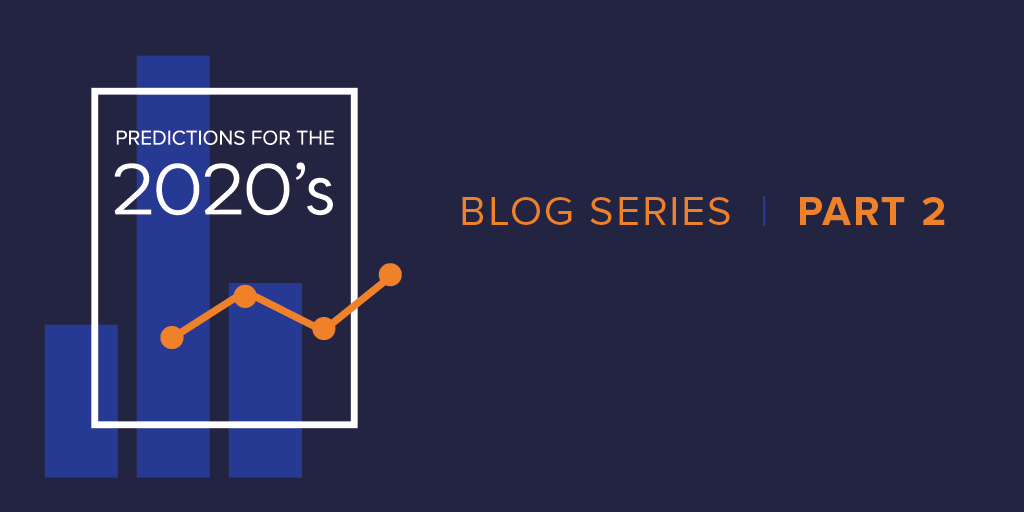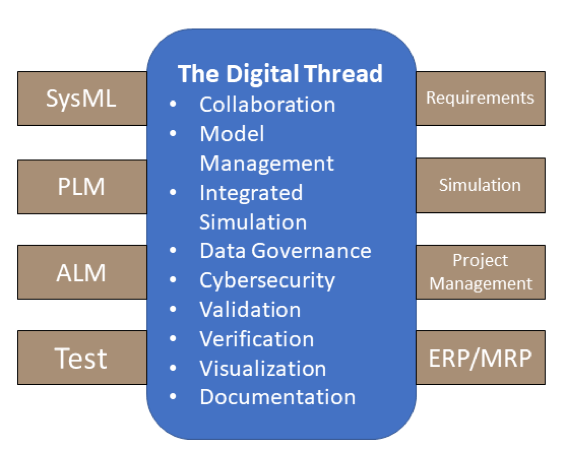Last month we held a webinar on model-based systems engineering titled, “MBSE Easy, Overcoming Organizational Challenges.”
This webinar was well received by our customers, and we wanted to make sure nobody missed out on this great content. Below, you’ll find a recording of the webinar and an abbreviated transcript.
Shifting to MBSE is an Organizational Paradigm Shift
An organizational paradigm shift from document-centric to model-based systems engineering (MBSE) can be daunting. The learning curve for systems engineers can be steep and the return on value is not often immediately apparent. In this webinar, I will explore some of the most common MBSE challenges and tactics to help teams eliminate the barriers to broader adoption. I will also illustrate how Jama Connect can be used to streamline a collaborative data-driven approach and provide more immediate systems engineering value to larger numbers of stakeholders. The agenda topics that we’re going to go over today are benefits of MBSE to the broader stakeholder community, best practices for cultural adoption, the expected return on value, keys to eliminating documents and then using Jama Connect to facilitate the implementation of MBSE.
The Benefits of MBSE – Specifically Human Understanding
To help us understand the benefits of MBSE to a broader stakeholder community, let’s talk about what it is used for. MBSE in the words of industry leaders like INCOSE, NASA, or Gartner Research describe it as “facilitating understanding or providing aid to decision-making, connecting system relationships, controlling system configurations, providing communication of an overall system picture that’s accessible to all.”
It ensures everyone is working on the same up-to-date material at all times. I see a theme here. Many of these are very human-centric. MBSE is designed to take that complexity and allow it to be consumed and understandable by everyone. From a technical standpoint, configuration control, versioning, relationship management are some of the keys. Why MBSE? Human understanding, decision-making, relationship management, configuration and version complexity management are just not things you can easily achieve when you mire yourself in documents.
RELATED: Strategies for Remote Engineering Teams
The Limitations of a Document-Centric Approach
In a document-based world, engineers might be manually searching documents, manually managing a section number heading scheme in the document, it might be creating siloed trace information and spreadsheets. They might not know where the latest version of a particular document is or who might have even changed the document last. They might be relying on a single person who is the tool guru because the tool is old and too hard to learn how to use. They might be spending hours or days cross-referencing many data sources just to determine an impact change or consider a trade-off. Here we are in 2021 and still, so many of us are kind of swimming in the sea of documents. Mechanical engineering, electrical engineering, and even software engineering, these disciplines have been using models for decades, right. Now, having the best information at the system level is critical. What we need is a paradigm shift away from documents and a shift in the way you think.
The Benefits of MBSE for the Broader Stakeholder Community
The benefits of a paradigm shift from documents to data that MBSE brings is not merely for the systems engineer to reap. The new ways of thinking about the system being developed and the new structure of the data itself benefits everyone. I’d argue that the system view is the most important view of all. I think most of you are systems engineers out there and I think you tend to agree. MBSE allows engineers to work successfully at greater levels of complexity. It also improves the communication between the technical communities as well as the business and even the customer. It provides visibility of the gaps that you might have, errors, misalignments of the system design — those kinds of problems might result in defects in the system or cause design rework or cause missed requirements or even dropped requirements. Some of the MBSE challenges — there are challenges out there with adopting MBSE.
RELATED: MBSE and The Digital Thread
The Unique Challenges of MBSE – And Tips for How to Solve Them
The benefits that MBSE promises do present some of these unique challenges to those who are beginning their MBSE journey. The learning curve can be steep. Learning the language of SysML and maybe your chosen modeling tool takes a long time. This learning curve can’t be done in silos or via tutorials. The learnings need to be backed by your experience. Organizations need to adopt strategies for not just how their systems engineers are trained but how they will use MBSE and then how they need to adopt strategies for how the entire organization works and communicates in that paradigm.
Overcoming Organizational Resistance to Change
Organizational changes are often met with resistance to change. Change has to start at the executive sponsorship level. I think that goes without saying — any organization adopting any kind of change really needs an executive sponsor. That executive sponsor needs to demonstrate their leadership with their actions. MBSE lip service won’t work. They have to be involved and they have to demonstrate that they’re willing to make the changes themselves.
MBSE isn’t necessarily a one-size-fits-all either. The method and extension of the methods needs to be adapted to the actual system of interest that’s being developed. Systems also need to be developed with modularity and reusability.
RELATED: Jama Connect in the Digital Engineering Ecosystem
Misaligned Teams and Overcoming Boundaries
Many of the challenges to adoption are human factors and they might be the easiest to mitigate by perhaps simplifying your tools and your approach. Misaligned teams struggle to overcome those cultural boundaries to develop the services and products. MBSE is not something that just the systems engineering team does but it’s a technique. It’s similar to the Agile method, it’s something that the entire organization embodies. It requires that change in culture in order to adopt.
Moving from a documents-based approach to MBSE doesn’t have the be daunting. Start small. Put aside doing day-to-day work in the documents and have everyone across the team access data in your chosen MBSE solution. Even if you don’t have a dedicated SysML tools, you can perform MBSE by creating lists or drawings that capture architectures and behaviors.
In many cases, it takes time to fully adopt MBSE and engineers might feel insecure. Moreover, implementing MBSE is not about just using the tool, it’s about understanding what to model, why, and for which outputs. Again, that comes with experience. Don’t bite off more than you can chew. Don’t just roll out your SysML tool and expect to be doing MBSE. That just doesn’t work. Try to leverage web-based tools that provide more stakeholders a consumable view of the information that maybe they would regularly see in documents.
If tools are becoming your focal point, make sure that they are usable and do provide value across the teams. Communicate the MBSE return on value to them. Communicate the return on the value back to your leadership team. Systems engineering, unlike software or electrical or mechanical engineering doesn’t have that output that’s tangible to the customer. Leaders need reminding of the value that MBSE is delivering.
